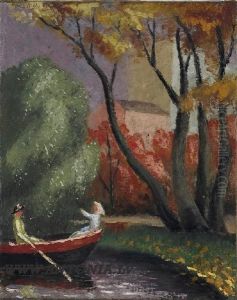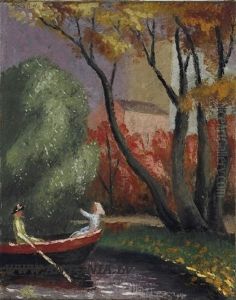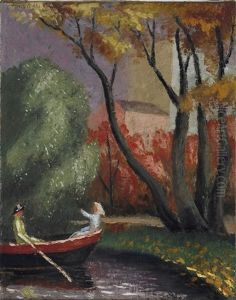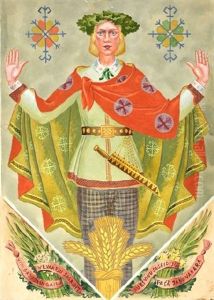Ansis Cirulis Paintings
Ansis Cīrulis was a Latvian graphic artist, painter, and designer, considered one of the pioneers of Latvian national romanticism and modernism in the realm of applied arts. Born on May 13, 1883, in the town of Kocēni, Latvia, which at the time was part of the Russian Empire, Cīrulis showed artistic talent from a young age. His work was deeply rooted in Latvian folklore and national identity, which was particularly significant during the period of the Latvian National Awakening.
Cīrulis studied at the Riga City Art School from 1903 to 1906, and later at the St. Petersburg Art and Industry Academy (now known as the Stieglitz Academy) from 1906 to 1911, where he honed his skills in graphic design and decorative arts. His style was characterized by a unique synthesis of Art Nouveau, national romanticism, and elements of early modernism, with a particular emphasis on incorporating traditional Latvian ornamental patterns into his work.
Throughout his career, Cīrulis worked across various media, including graphic design, painting, furniture design, and book illustration. He is particularly renowned for his contributions to graphic design, creating ex-libris, bookplates, and posters that showcased his innovative use of typography and ornamental designs. His graphic art often featured bold geometric shapes, stylized nature motifs, and a clear and powerful use of line, which became a hallmark of his design work.
Cīrulis played a significant role in the development of Latvian identity through art. He was involved in designing Latvian banknotes, postage stamps, and even the country's national flag. His contributions in this area were part of the broader efforts to establish a distinct Latvian culture and nationhood in the early 20th century.
During the interwar period, Latvia experienced a brief spell of independence, and Cīrulis' work flourished. However, the political turmoil of the 1930s and the subsequent Soviet occupation of Latvia had a profound impact on his life and work. Ansis Cīrulis passed away on March 7, 1942, in Riga, during World War II under the harsh conditions of the occupation.
Cīrulis' legacy lives on in Latvia and beyond. His art remains influential and is celebrated for its innovative blend of traditional Latvian elements with modern design principles. His work is often seen as a bridge between the past and the future, reflecting a pivotal moment in the development of Latvian national consciousness and artistic expression.




